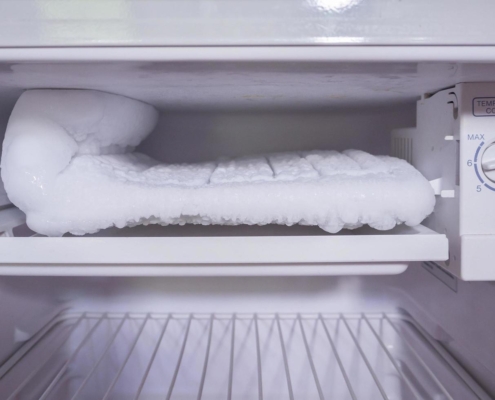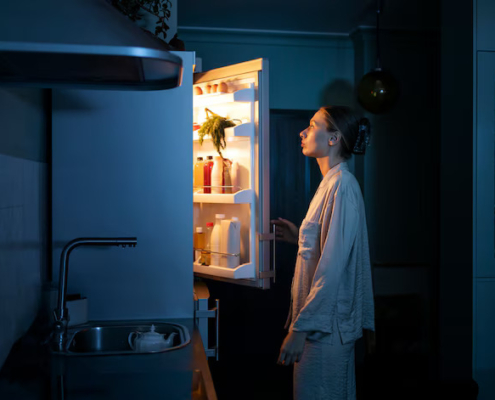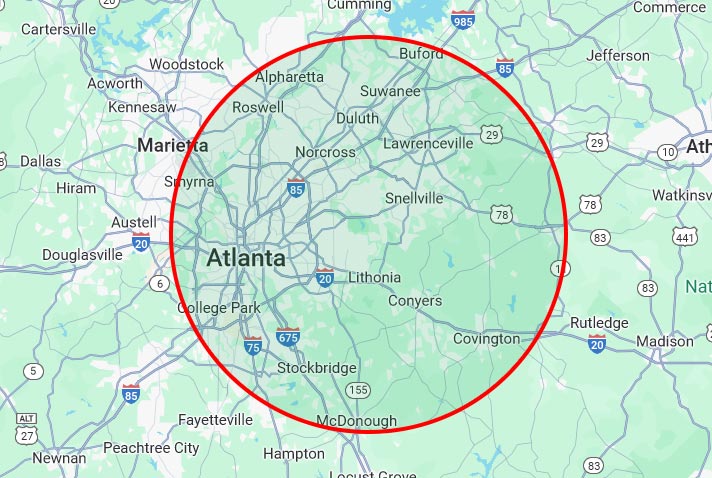Can You Fix a Fridge by Yourself?
 Is your fridge acting up, and you’re wondering if you can tackle the repairs on your own? With the right information, and the right tools, many common fridge issues can be resolved with a DIY approach. However, it’s crucial to know your limits and recognize when it’s time to call in the experts.
Is your fridge acting up, and you’re wondering if you can tackle the repairs on your own? With the right information, and the right tools, many common fridge issues can be resolved with a DIY approach. However, it’s crucial to know your limits and recognize when it’s time to call in the experts.
Join us as we explore DIY fridge repairs, offering tips and insights to help you make informed decisions about caring for your kitchen’s most essential appliance.
Article Summary:
- Common Refrigerator Problems
- Safety First: Precautions Before Starting Your DIY Repairs
- Essential Tools for DIY Refrigerator Repairs
- Diagnosing Temperature Issues in Your Fridge
- Addressing Water Leaks and Ice Maker Malfunctions
- Dealing with Noisy or Unusual Sounds
- When to Call in the Professionals
1. Common Refrigerator Problems
One of the most common problems is temperature fluctuations, which can lead to spoiled food and energy inefficiency. Water leaks are another frequent issue, often stemming from blocked defrost drains or damaged water supply lines. Additionally, unusual noises can signal underlying mechanical problems, such as a faulty compressor or worn-out fans.
Identifying these issues early is crucial, as it can prevent further damage and costly repairs down the line. By familiarizing yourself with these common refrigerator problems, you can take proactive steps to maintain the health of your appliance and ensure it runs smoothly for years to come.
2. Safety First: Precautions Before Starting Your DIY Repairs
Be sure to follow these important safety tips before attempting any refrigerator repair:
- Always unplug the refrigerator before starting any repairs to eliminate the risk of electric shock.
- Wear protective gear like gloves and safety goggles to guard against sharp edges and accidental spills.
- Ensure the area around the fridge is well-ventilated to avoid inhaling any fumes from the appliance or cleaning agents.
- Keep a dry workspace to prevent slipping or electrical hazards caused by spilled water or other liquids.
- Familiarize yourself with the fridge’s manual to understand the layout and specific safety guidelines provided by the manufacturer.
- Use insulated tools to further reduce the risk of electrical accidents.
3. Essential Tools for DIY Refrigerator Repairs
There are several tools that you will need for repairs:
- Multimeter: Essential for testing electrical components and ensuring they’re functioning correctly, helping diagnose issues like faulty circuits or components.
- Screwdriver Set: Necessary for removing panels and accessing the internal parts of the fridge; different sizes ensure compatibility with various screws.
- Pliers: Useful for gripping, bending, or cutting wires and other small parts, making it easier to handle components securely.
- Wrench Set: Important for loosening and tightening bolts and nuts, particularly when dealing with the fridge’s mechanical components.
- Nut Driver: Specifically designed for turning nuts and bolts, often found in refrigerator assemblies, to ensure a tight and secure fit.
- Needle-Nose Pliers: Ideal for reaching into tight spots and manipulating small components or wires with precision.
- Flashlight: Provides essential illumination when working in poorly lit areas or behind the appliance, ensuring you don’t miss any details.
- Tape Measure: Handy for measuring parts or spaces to ensure proper fit and alignment during repairs.
4. Diagnosing Temperature Issues in Your Fridge
Temperature issues in your fridge can be quite a hassle, but with a little detective work, they can often be resolved. Start by checking the thermostat settings; it’s not uncommon for them to be accidentally adjusted. Ensure it’s set to the recommended temperature, typically between 37-40°F for the fridge and 0°F for the freezer.
Next, inspect the vents inside your fridge and freezer compartments. Blocked vents can restrict airflow, leading to uneven cooling. Make sure they’re clear of any food items or debris.
Additionally, examine the door seals. A faulty seal can let warm air in, causing the fridge to work overtime and not cool effectively. You can test the seal by closing the door on a piece of paper; if you can pull it out easily, the seal might need replacing.
5. Addressing Water Leaks and Ice Maker Malfunctions
Water leaks and ice maker issues are common refrigerator problems that can often be resolved with some straightforward troubleshooting. If you notice water pooling inside or beneath your refrigerator, a blocked defrost drain might be the culprit. Start by locating the drain, typically found at the bottom of the refrigerator, and clear any debris or ice build-up using warm water or a gentle pipe cleaner.
For refrigerator leaks related to the water supply, inspect the water lines for any cracks or loose connections, tightening or replacing parts as needed. Ice maker problems could stem from a clogged water filter or a malfunctioning motor. Make sure to replace the water filter regularly, as specified in your refrigerator’s manual, and check the motor for any unusual noises or lack of movement.
6. Dealing with Noisy or Unusual Sounds
 A noisy refrigerator can be more than just an annoyance; it often signals underlying issues that may require attention. Common culprits of unusual sounds include a faulty compressor, which might emit a loud buzzing or humming noise, or worn-out fans that create a whirring or rattling sound.
A noisy refrigerator can be more than just an annoyance; it often signals underlying issues that may require attention. Common culprits of unusual sounds include a faulty compressor, which might emit a loud buzzing or humming noise, or worn-out fans that create a whirring or rattling sound.
To troubleshoot these noises, start by unplugging your fridge and carefully inspecting the compressor at the back of the appliance for any signs of wear or damage. If the compressor seems fine, check for loose or damaged fan blades in both the fridge and freezer compartments, ensuring they spin freely without obstruction.
Tightening any loose screws or repositioning components can often resolve rattling sounds. However, if the noise persists, or if you’re unsure about handling electrical parts, it might be wise to call a professional appliance repair company. Read more in “Why Is My Freezer Making Noise?”
7. When to Call in the Professionals
While DIY repairs can save time and money, some fridge issues require the expertise of a professional. If you notice any of the following signs, it’s best to call in a licensed technician:
- Electrical sparks or burning smells
- Refrigerant leaks
- Motor overload or overheating
- Frequent tripping of circuit breakers
- Issues with built-in water or ice dispensers
For professional appliance repair in Atlanta, Covington and the surrounding areas, call Comfort Appliance Repair. Our team of experienced technicians is trained to handle all types of refrigerator repairs for all major brands including Samsung, LG, Whirlpool and more. Our services are fast, reliable and affordable, ensuring your fridge is up and running in no time. Call Comfort Appliance Repair today!
By Dennis Godynuk, Owner of Comfort Appliance Repair
Dennis Godynuk is the owner of Comfort Appliance Repair in Covington, GA. Comfort Appliance provides fast and reliable repair services for all major household appliances. Dennis and his team of experienced technicians can tackle any problem, from broken refrigerators to malfunctioning dishwashers, and their prices are very competitive. Customers can rest easy knowing that their appliances are in good hands when they call Comfort Appliance Repair.



